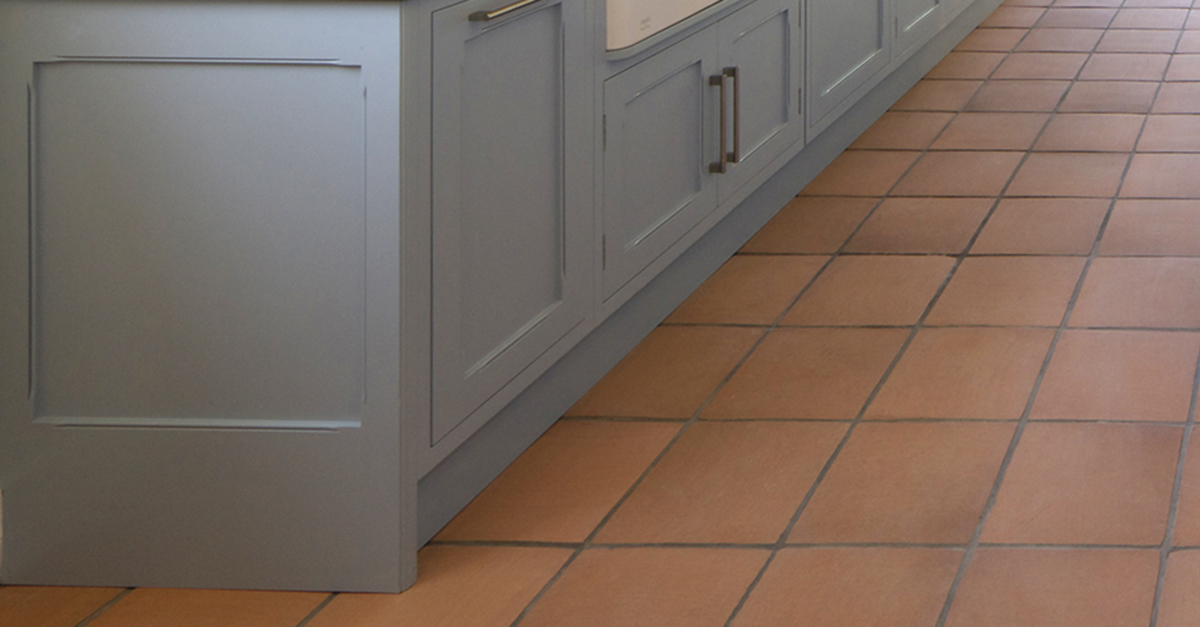Applying a penetrating sealer to grout looks like a simple process, but the closer you look, the more complex it becomes. There are certain things you need to know before you start the job.
Penetrating sealer is applied to the grout that is between clay tile—not the tile itself. There are two basic types of grout: cementitious and epoxy. We primarily seal cementitious grout to protect it against staining and moisture penetration, not abrasive wear. But before applying it, ask the following questions.
What is the condition of the clay tile and grout?
If the grout is soft, pitted, powdering, cracked, or missing or if the tile is broken, cracked, or loose, make the necessary repairs before applying a sealer. Sealer is also beneficial on textured, rough, worn, damaged, cracked, antiqued, and tumbled tile surfaces.
Follow the standard practice of thoroughly cleaning clay tile and its surrounding grout before you apply the sealer. Most professional cleaners use an alkaline cleaner or stripper and a 175-rpm rotary floor machine with a brush attachment (instead of a synthetic pad) to loosen soil and stains. Don’t forget to allow 10–15 minutes of dwell time before you use the floor machine to scrub or strip the floor. Follow this by removing the cleaning solution via a vacuum. Then, apply a water rinse or two, and allow 12–24 hours of dry time before applying the sealer. A thoroughly dry floor allows the sealer to sink as deeply as possible into the grout, which gives you the best protection and a longer life for the sealer.
Some cleaners speed up the drying process by using air mover fans and heat. Tile and grout manufacturers do not recommend using acid etch on clay tile or grout as it could remove color from pigmented grout and damage metal surfaces.
Are you working with cementitious grout?
You must make sure you are working on the actual grout itself and not on top of several coats of finish, sealer, and soil. Chemically remove all surface soil, finish, and sealer with multiple applications of a stripping solution, followed with rinsing. Then, dry the test area with a hair dryer or fan. Once you are sure you are in contact with the actual grout, apply a drop or two of a mild acid (like white vinegar) to the bare grout. If the grout is cementitious, it will fizz. If not, then you are not down to the bare grout, or it’s an epoxy grout.
Is sealer present?
Place a drop of water on the grout. If the water beads up, this indicates that sealer is most likely present. If the water sinks in and, when you wipe it off, the grout appears darker in color than the surrounding grout, this indicates that it is not protected by sealer.
You can chemically clean the surface and dry it as outlined previously, or take a small piece of sandpaper (100 grit) and rough up an inch or two of the grout until it starts to powder. All testing should be done in an inconspicuous area and gently so as to not damage the grout.
What type of sealer should I use?
Use a penetrating/impregnating sealer, not a topical seal, finish, or coating. The product you use should be made specifically for the type of material/grout/flooring you are working on. A high-quality sealer will not change the gloss, appearance, or slip resistance of the surface to which it is applied. There are products on the market that contain additives designed to enhance or change the appearance of the surface. Ask the right questions so you get the right product.
Product quality can vary, and most companies sell several quality levels of sealers based on the capabilities, formulation, and price. Most of today’s products are water-based, although some companies offer solvent-based products. Check with the manufacturer as to which product is best for your specific application and surface needs.
How do I apply the sealer?
Read the product label and follow the manufacturer’s application instructions. Application options might include the use of a brush, microfiber pad, roller wheel applicator, or sprayer.
I would caution against spray application of sealer due to overspray issues and the health risks involved. If you do decide to spray, make sure to wear the proper personal protective equipment (PPE) and follow other safety precautions.
How do I remove stains?
Most stains will be removed or lightened during cleaning. If stains remain, test available stain removal products in a small area following a longer dwell time, then agitate, remove, rinse, and speed dry to determine results. Some stains might be permanent.
I’ve had good luck using products sold for carpet spotting on some grout stains. Don’t mix chemicals or apply more than one chemical at a time to the same area when testing products or attempting stain removal.
Should I reapply sealer?
The reapplication of sealer depends on traffic levels, soil type, and the chemicals used for daily/routine cleaning. The best way to determine reapplication frequency is to test the surface for moisture penetration. If the grout is absorbent and water sinks in, reapply sealer.
Do I need to take any safety precautions?
Cleaning and sealing grout will involve processes, equipment, and chemicals that can pose health and safety hazards to the employees doing the work, as well as the building occupants and the public. Part of your job as a cleaning professional is to recognize and eliminate risks to everyone who enters the area.


